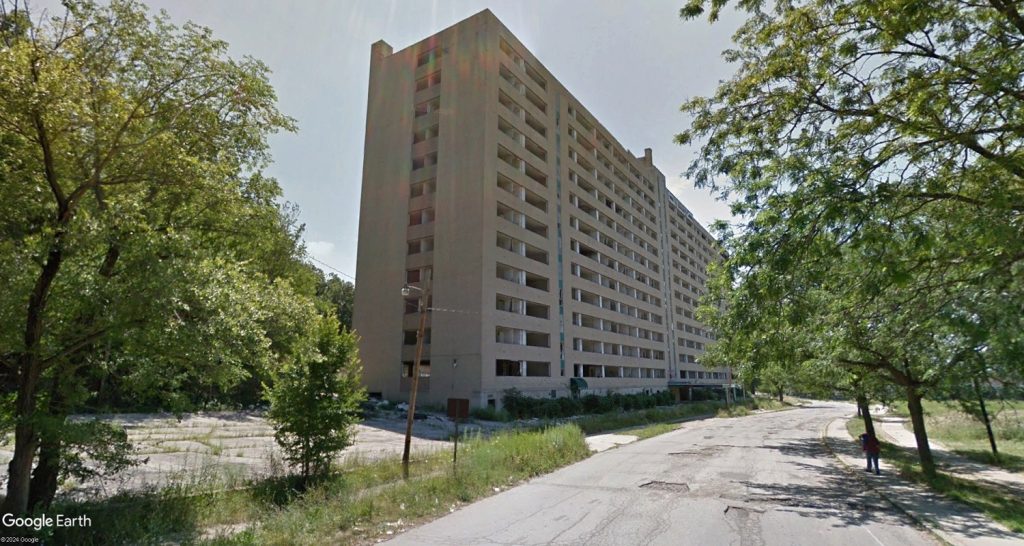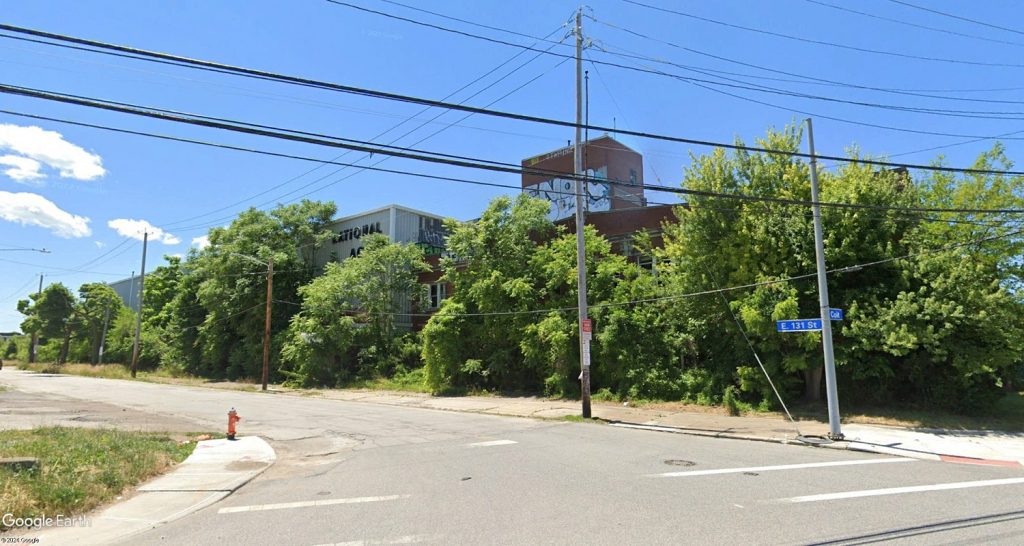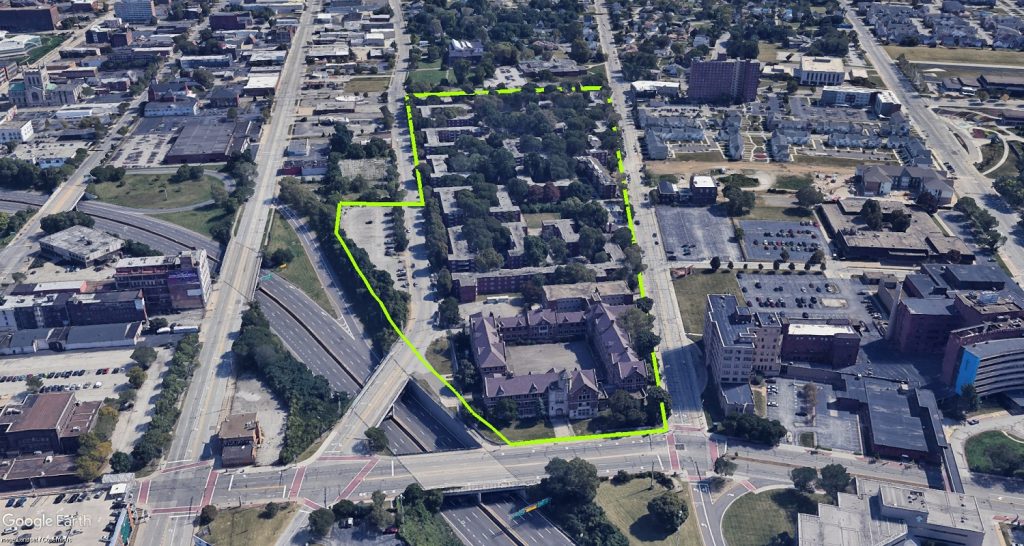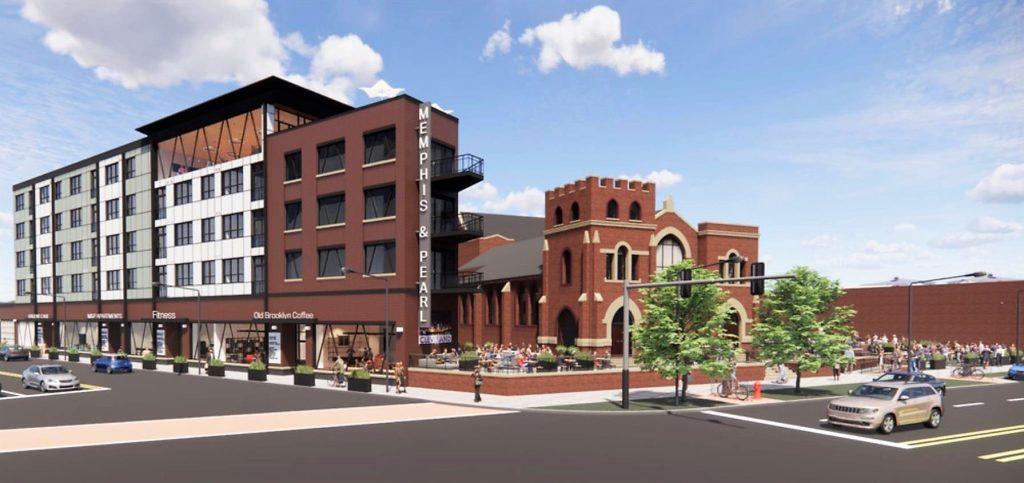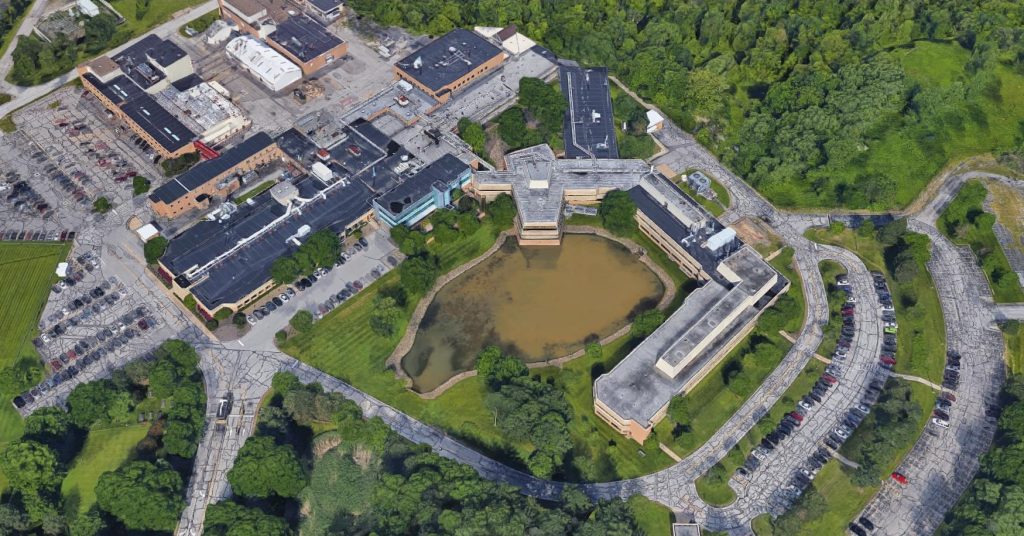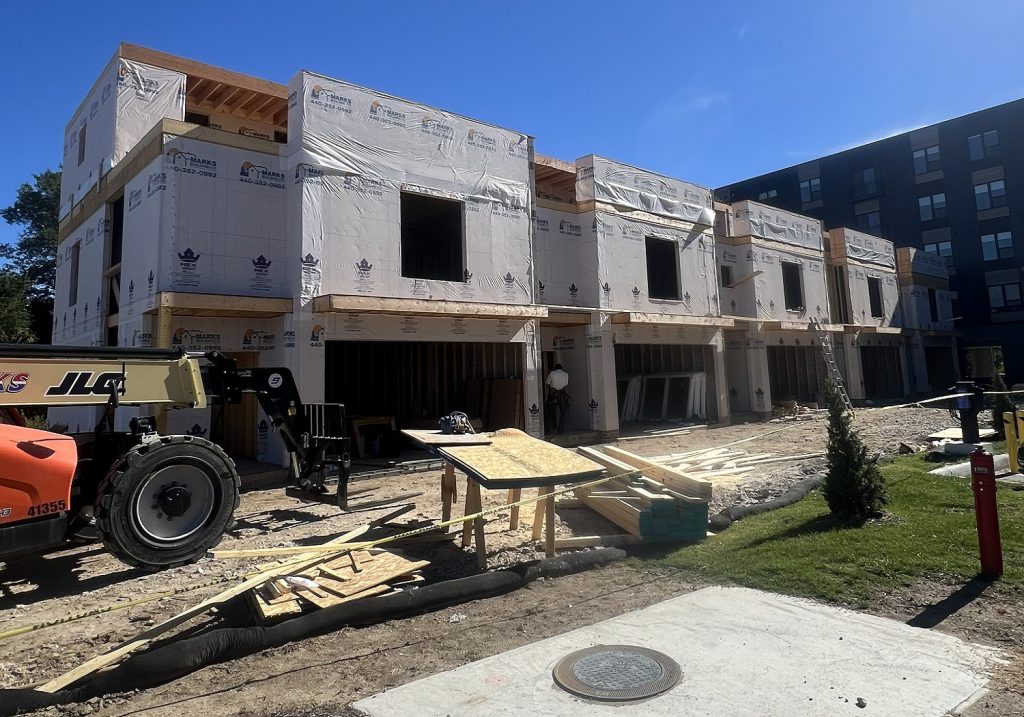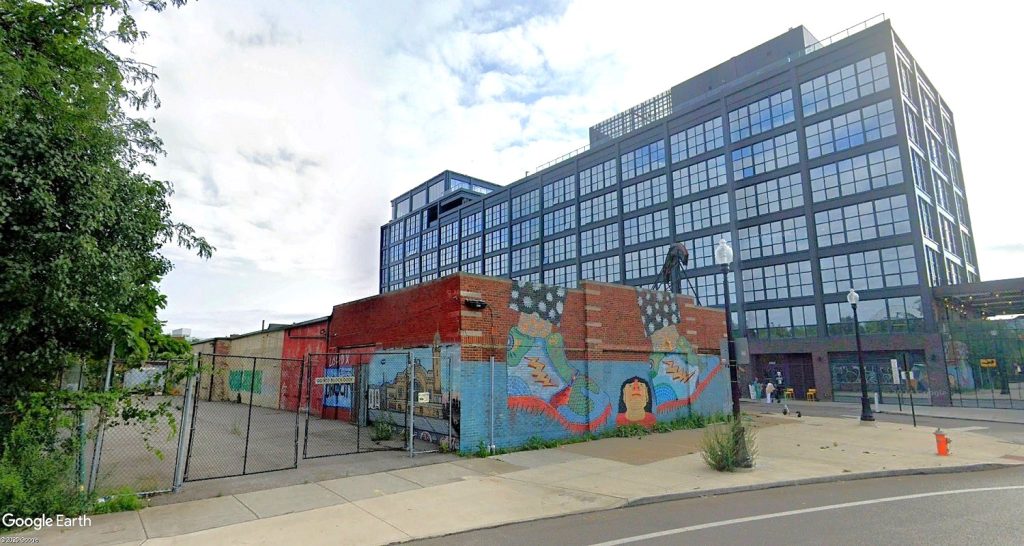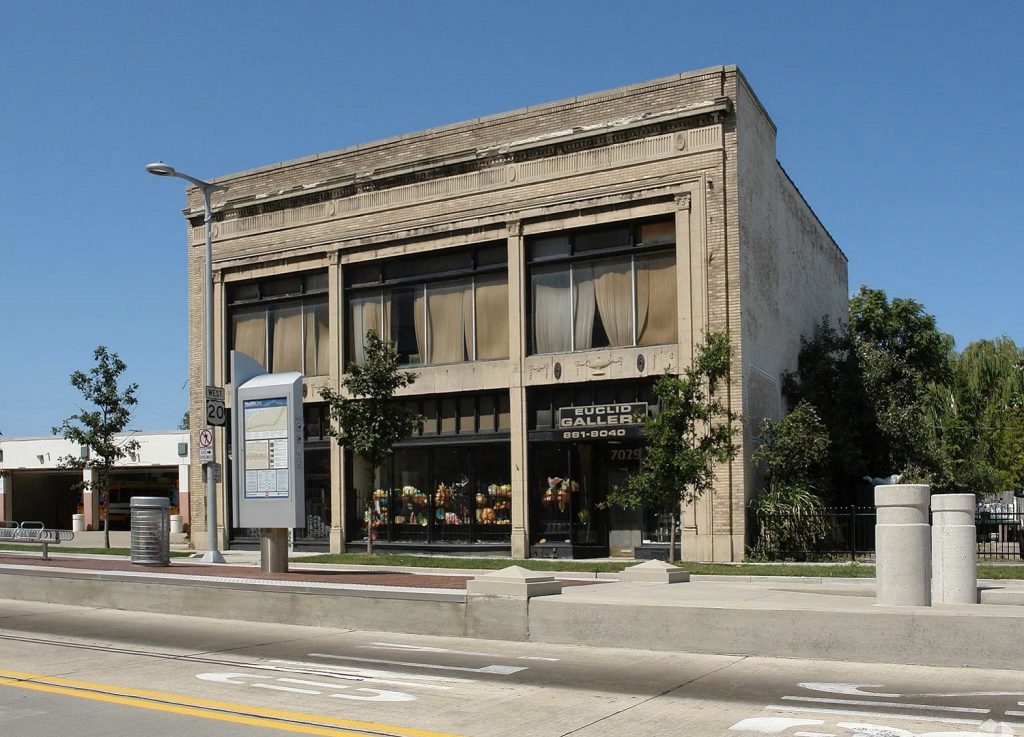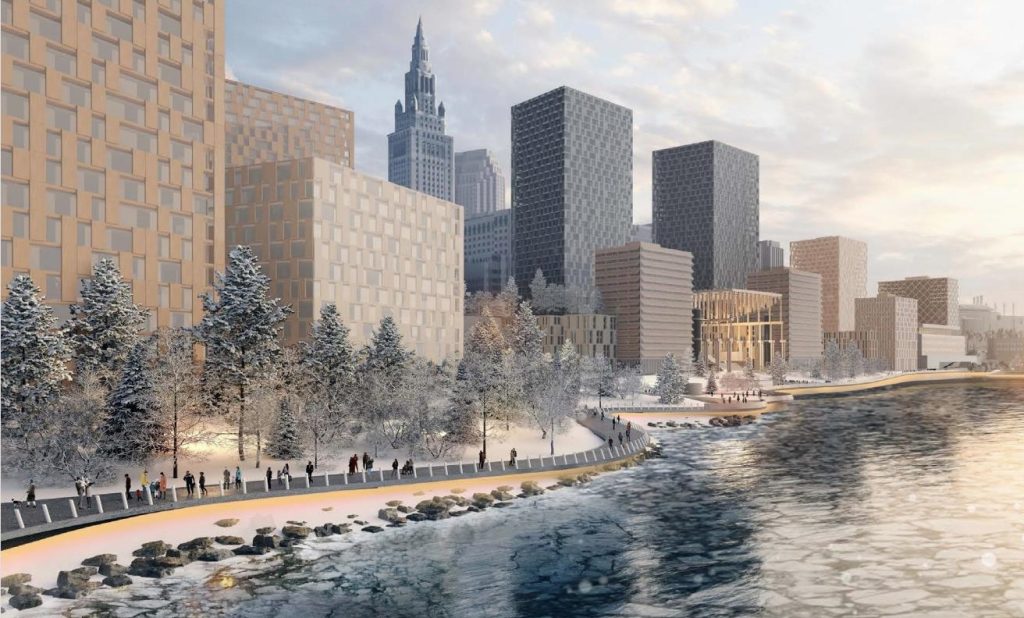
In Downtown Cleveland, Bedrock’s Riverfront Development is planned on the Tower City Center side of the Cuyahoga River. But the riverfront land has historically been used for industrial purposes for nearly two centuries and needs to be cleaned up before new construction can begin. Cuyahoga Land Bank won $10 million to help make that happen (Adjaye Associates). CLICK IMAGES TO ENLARGE THEM.
1,100 demos, 7 sites to see new uses
The Cuyahoga County Land Reutilization Corp., known simply as the Cuyahoga Land Bank, has secured multiple funding awards from the Ohio Department of Development’s Brownfield Remediation Program for demolishing more than 1,100 structures, mostly blighted single-family homes in Cleveland and East Cleveland. But there are also multiple funding awards it got for cleaning up polluted industrial sites so they can be redeveloped for new housing and jobs.
State and county officials yesterday announced $106.9 million in state support to help clean up and redevelop 61 hazardous brownfield sites in 22 counties. Cuyahoga Land Bank received $23 million for the mass demolitions plus millions more for cleaning up former industrial-commercial sites for new development projects.
The site clean-up work includes the Bedrock Riverfront Development and former Juvenile Justice Center in Downtown Cleveland, the Shoreway Tower in Cleveland’s Battery Park neighborhood, former National Acme plant in Cleveland’s East Glenville, St. Luke/Greenline buildings in Cleveland’s Old Brooklyn, redevelopment of Sherwin-Williams’ Automotive Division in Warrensville Heights, and the vacant Sears Department Store at Southland Shopping Center in Middelburg Heights.
“There is no easy way to clean up the contamination at these sites; they all need expert remediation that’s too costly for communities to take on alone,” said Gov. Mike DeWine in a written statement. “Through this program, we’re helping local communities reclaim hazardous properties so that they can be reimagined and redeveloped.”
Demolition is a critical tool in the land banking and community stabilization process, said county landbank officials. Beyond higher value homes and strong school districts, stable communities often stem from removal of blighted properties through demolition, offering residents improved community perception and more public amenities such as parks, gardens and other community spaces.
“We are grateful for these funds that will get these much-needed projects underway,” said Adam Stalder, Cuyahoga Land Bank’s director of community stabilization. “All the abandoned and vacant properties we have been funded to demolish have contributed serious blight and devaluation to the neighborhoods in which they are located. To help the residents and increase the value of their homes is directly aligned with the mission we work to achieve every day.”
Of the more than 1,100 demolitions to remove blight across Cuyahoga County, most will be single-family homes that have been abandoned for a long time and are not cost-effective to renovate. There are also several larger structures on the land bank’s demolition to-do list, including in East Cleveland where the land bank has been very active in redeveloping, especially in the Circle East area.
One of the featured demo projects is the long-abandoned 13-story Huron Place apartment tower in East Cleveland. It has been a source of drug activity and other crimes, and has dragged down the community even further ever since the Cleveland Clinic Huron Hospital across the street closed in 2011, taking more than 800 good-paying jobs with it.
“This award will have a meaningful impact on the individual cities where we demolish blighted properties and Cuyahoga County as a whole,” Land Bank President and General Counsel Gus Frangos added. “We are grateful for the continual support from the State of Ohio, Governor DeWine and the Department of Development. They have been critical partners in our work and the progress land banking has made across our county.”
The Cuyahoga Land Bank was the recipient of additional, site-specific grant awards to clean up polluted properties for job-producing redevelopment projects. The state’s press release is somewhat vague on some of them, but there descriptions reveal what and where they are with more detail added for clarity.
Cleveland Riverfront Development — $10 million award
This downtown project involves the remediation of three parcels along the riverfront that were historically used for various industrial activities, including paint and varnish works, oil works, scrap iron yard, and foundry. The properties currently serve as surface parking lots. The environmental cleanup will address soil contamination from arsenic and lead, primarily due to historic fill.
The remediation includes removing contaminated soil, demolishing parking booth structures, and replacing the soil with clean fill. Bedrock Real Estate of Detroit aims to redevelop the site into a mixed-use district featuring public recreation, office, retail and parking facilities. A tax-increment financing district for the site was approved by the city this week. This redevelopment is expected to provide long-term economic and recreational benefits to the Cleveland community.
Former National Acme Site — $7,628,055 award
Where Cleveland’s Glenville and Collinwood neighborhoods meet, a historical machine-tool manufacturing facility will be properly cleaned. The former National Acme site is a public nuisance that contains illegally disposed solid waste and asbestos due to an unauthorized demolition. Planned activities include asbestos removal, solid waste disposal, demolition of remaining structures, and soil remediation.
The site at 170 E. 131st St. will be prepared for future industrial use, creating a shovel-ready site for manufacturing or job-dense activities. The city of Cleveland will ensure compliance with environmental regulations and anticipates the creation of 150 new jobs through the redevelopment.
Former Sears Southland Shopping Center — $5,577,831 award
This project involves the cleanup and redevelopment of two vacant structures, including a former Sears department store and an automotive shop, totaling approximately 211,095 square feet. Built in 1964, the buildings contain significant quantities of asbestos-containing materials and universal wastes. The project will include the development of asbestos, universal waste, and hazardous materials specifications, permitting, contractor bidding, abatement, and demolition.
The site, bounded by West 130th Street, Pearl and Smith roads, will be transformed into a mixed-use development with 375 multifamily rental units, 40,000-50,000 square feet of retail space, and public park areas. This redevelopment aligns with the Middleburg Heights Community Master Plan and is expected to create 400 new jobs and retain 270 existing positions.
Juvenile Justice Center — $6,810,362 award
The Downtown Cleveland project focuses on the demolition and asbestos abatement of the former Juvenile Justice Center, a 205,481-square-foot building that opened in 1931. The structure, now vacant, has undergone partial hazardous materials abatement and selective demolition. The remaining abatement will address asbestos in areas such as the troweled roof surface, inaccessible pipe insulation, and window system caulking.
The Campus District site is surrounded by East 22nd Street plus Cedar and Central avenues. Clearing and cleaning the site is expected to contribute to the future construction of up to 900 mixed-income housing units and create a site for hundred create 25 new jobs. It also crucial for the site’s redevelopment, enabling the realignment of the Interstate 90 Inner Belt highway and improvements to the East 22nd bridge, enhancing connectivity for Cleveland neighborhoods and city services.
Memphis and Pearl — $2,042,027 award
This project in Cleveland’s Old Brooklyn involves the remediation and redevelopment of historic buildings, including the former St. Luke’s Church and Greenline buildings. The project site includes seven properties, partially owned by Old Brooklyn CDC and Pearl Road United Methodist Church. Geotechnical analysis of the site has been underway in recent weeks.
The plan entails hazardous material remediation, including asbestos and lead removal, as well as the demolition of certain structures to allow for adaptive reuse. The development aims to preserve the architectural heritage while introducing apartments, retail spaces, a craft brewery, and community facilities. The project is expected to generate 237 new jobs and contribute to the revitalization of the area of Memphis and Pearl roads.
Sherwin Williams R&D Campus Revitalization — $10 million award
In Warrensville Heights, this project involves the remediation and revitalization of the former Sherwin Williams Research & Development campus, a 100-acre property with 18 buildings totaling approximately 500,000 square feet. The site at 4440 Warrensville Center Rd., previously used for automotive and wood paint research, is being vacated as Sherwin Williams relocates to a new facility in Brecksville.
The project includes asbestos abatement, removal of universal wastes, demolition of obsolete structures, and installation of a passive vapor management system. The redevelopment plan envisions transforming the site into a modern industrial business park with five new buildings, totaling 680,000–707,229 square feet, projected to employ more than 350 people.
Shoreway Tower — $2,278,756 award
This project involves the remediation and redevelopment of a site with a long industrial history, including uses as a beer garden, dance hall, and various manufacturing operations. The site contains a vacant, dilapidated single-family home and old parking structures that require demolition. Remediation activities include soil removal and disposal of contaminated materials, soil capping, and re-routing an existing storm/sanitary line.
The redevelopment plan includes constructing a 13-story mixed-use complex with market-rate apartments, retail spaces, and a public art gallery. The project aims to transform the Battery Park neighborhood, enhance the Cleveland lakefront, and support community events and local businesses. Six jobs are anticipated to be created as a result of the project.
END

